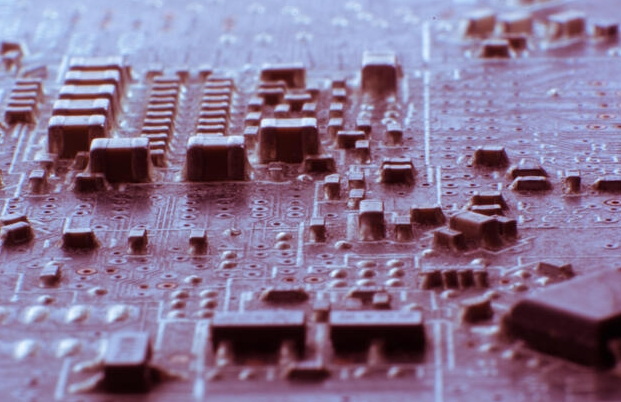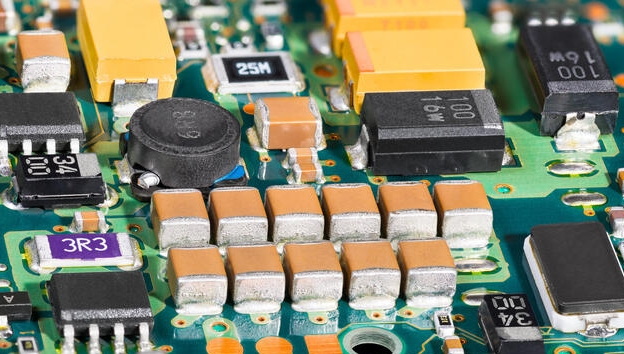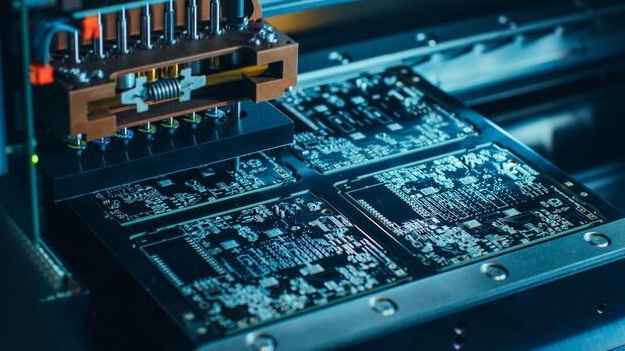Content Menu
● Introduction
● The Role of SMT Nozzle Calibration
● Benefits of Proper SMT Nozzle Calibration
● Challenges in SMT Nozzle Calibration
● Best Practices for SMT Nozzle Calibration
● The Impact of Nozzle Calibration on Production Efficiency
● The Role of Technology in Nozzle Calibration
● Importance of Hygiene in Nozzle Calibration
● The Economic Impact of Poor Calibration
● Conclusion
● FAQs
>> 1. What is SMT nozzle calibration?
>> 2. How often should SMT nozzles be calibrated?
>> 3. What are the signs of improper nozzle calibration?
>> 4. Can improper calibration damage components?
>> 5. Are there automated tools for SMT nozzle calibration?
● Citations:
Introduction
Surface Mount Technology (SMT) nozzle calibration is a critical process in the assembly of Printed Circuit Boards (PCBs). It ensures the precise placement of components, which is vital for the functionality and reliability of electronic devices. This article explores the importance of SMT nozzle calibration, its benefits, challenges, and best practices.

The Role of SMT Nozzle Calibration
SMT nozzle calibration involves aligning the nozzles of pick-and-place machines to ensure accurate component placement on PCBs. This precision is crucial for maintaining the quality of the assembly process, especially when dealing with miniature and delicate components. Proper calibration minimizes errors such as misalignment, which can lead to defective products.
The calibration process typically includes:
- Alignment Checks: Ensuring that the nozzles are positioned correctly relative to the PCB.
- Vacuum Pressure Testing: Verifying that the nozzles can pick up components without causing damage.
- Component Placement Verification: Testing whether components are placed accurately on their designated pads.
Without accurate calibration, components may be placed too high, too low, or in entirely incorrect positions, affecting the overall functionality of the finished product.
Benefits of Proper SMT Nozzle Calibration
Effective nozzle calibration offers several advantages:
- Reduced Defects: Accurate placement reduces the likelihood of errors such as missing or misaligned components, which can lead to product failures.
- Improved Efficiency: Proper calibration enhances the speed and reliability of the assembly process. Machines operate more smoothly when calibrated correctly, leading to faster production times.
- Cost Savings: Minimizing defects and rework leads to significant cost reductions. By ensuring that components are placed correctly the first time, manufacturers can avoid costly recalls and repairs.
- Enhanced Quality Control: Regular calibration helps maintain a high standard of quality in production, ensuring that finished products meet industry specifications and customer expectations.
Challenges in SMT Nozzle Calibration
Despite its importance, SMT nozzle calibration can be challenging. Common issues include:
- Wear and Tear: Frequent use can lead to nozzle degradation, affecting calibration accuracy. Regular inspections and maintenance are necessary to mitigate this issue.
- Environmental Factors: Dust and debris can interfere with the calibration process. Maintaining a clean workspace is essential for optimal performance.
- Human Error: Manual calibration is prone to mistakes, emphasizing the need for automated solutions that can provide consistent results.
- Component Variability: Different components may require specific nozzle configurations, making it necessary to recalibrate when switching between different types of parts.
Best Practices for SMT Nozzle Calibration
To ensure effective calibration, consider the following best practices:
- Regular Maintenance: Schedule routine checks to identify and address issues promptly. This includes cleaning nozzles and checking for wear.
- Use of Advanced Tools: Leverage automated calibration systems for higher accuracy. These systems often include software that simplifies the calibration process and reduces human error.
- Training: Equip operators with the necessary skills and knowledge to perform calibrations effectively. Ongoing training ensures that staff are aware of best practices and new technologies.
- Documentation: Keep detailed records of all calibration activities. This documentation helps track performance over time and assists in troubleshooting any issues that arise.

The Impact of Nozzle Calibration on Production Efficiency
Nozzle calibration significantly affects production efficiency in several ways:
- Minimized Downtime: Well-calibrated nozzles reduce machine downtime by ensuring smooth operation during component placement. When nozzles are consistently calibrated, there's less need for manual adjustments or troubleshooting during production runs.
- Fewer Production Errors: Accurate placement minimizes common defects such as solder bridges or tombstoning—issues where components stand upright instead of lying flat on their pads. These defects can be costly in terms of rework and material waste.
- Enhanced Component Handling: Properly calibrated nozzles ensure that delicate components are handled gently during both pickup and placement. This reduces the risk of damaging sensitive parts, which is particularly important in high-density PCB assemblies where space is limited.
The Role of Technology in Nozzle Calibration
Advancements in technology have significantly improved nozzle calibration processes:
- Automated Systems: Modern pick-and-place machines often come equipped with automated calibration features that allow for quick adjustments based on real-time feedback from sensors. This technology reduces reliance on manual processes and enhances overall accuracy.
- Vision Systems: Integrated vision systems help verify component alignment before placement. These systems use cameras to detect fiducials (reference points) on PCBs, allowing for precise adjustments during assembly.
- Software Solutions: Advanced software tools enable manufacturers to simulate various scenarios during the calibration process. These simulations help predict potential issues before they occur on the production line, allowing for proactive measures to be taken.
Importance of Hygiene in Nozzle Calibration
Proper hygiene is critical when it comes to nozzle calibration:
- Contaminant Removal: Dust, debris, and other contaminants can accumulate on nozzles over time, affecting their performance. Regular cleaning routines should be established to ensure that nozzles remain free from buildup that could hinder their functionality.
- Scheduled Maintenance Protocols: Implementing a strict maintenance schedule helps ensure that all equipment remains in optimal condition. This includes not just cleaning but also inspecting for wear or damage that could affect performance.
The Economic Impact of Poor Calibration
Failing to properly calibrate SMT nozzles can have significant economic repercussions:
- Increased Costs Due to Rework: Misplaced components often require rework or replacement, leading to increased labor costs and wasted materials. These expenses can accumulate quickly if not addressed through proper calibration practices.
- Potential Loss of Business: Consistent quality issues stemming from poor nozzle calibration can damage a manufacturer's reputation. Customers expect reliable products; failing to deliver can result in lost contracts or reduced sales.
Conclusion
SMT nozzle calibration is indispensable for achieving high-quality PCB assemblies. By ensuring precision and reliability in component placement, it plays a pivotal role in the electronics manufacturing process. Adopting best practices and addressing challenges can further enhance its effectiveness. As technology continues to evolve, staying updated with advancements in calibration techniques will be essential for maintaining a competitive advantage in the industry.

FAQs
1. What is SMT nozzle calibration?
SMT nozzle calibration is the process of aligning pick-and-place machine nozzles to ensure accurate component placement on PCBs. This involves checking alignment, vacuum pressure, and placement accuracy to prevent defects during assembly.
2. How often should SMT nozzles be calibrated?
Calibration frequency depends on usage and environmental conditions; however, regular checks are recommended—ideally before each production shift—to maintain accuracy.
3. What are the signs of improper nozzle calibration?
Indicators include misaligned components, increased defects during assembly, inconsistent product quality, and frequent machine errors during operation.
4. Can improper calibration damage components?
Yes, misaligned nozzles can cause physical damage to components during placement or lead to circuit failures if components are not positioned correctly on their pads.
5. Are there automated tools for SMT nozzle calibration?
Yes, advanced automated calibration systems are available that enhance accuracy by reducing human error and providing consistent results across different production runs.
Citations:
[1] https://www.zjyingxing.com/info/what-is-the-role-of-nozzle-calibration-in-smt-87605940.html
[2] https://www.gssmt-parts.com/what-is-the-effect-of-nozzle-calibration-on-smt-mounting-machines.html
[3] https://www.ipcb.com/pcba-tech/8193.html
[4] https://www.linkedin.com/pulse/effective-measures-improve-smt-assembly-quality-tina-raypcb-rijtf
[5] https://www.zjyingxing.com/info/what-is-the-importance-of-camera-calibration-82411644.html
[6] https://github.com/openpnp/openpnp/wiki/Vision-Solutions
[7] https://iconnect007.com/index.php/article/52613/smt-preventive-maintenance-stop-5-major-problems-with-pick-and-place-nozzles/52616
[8] https://www.hct-smt.com/blog/keep-your-machines-running-smoothly--expert-tips-for-automatic-smt-mounter-pick-and-place-machine-maintenance
[9] https://smtnova.com/hanwha-smt-nozzles/
[10] https://www.allion.com/tech_syst_smt/




















